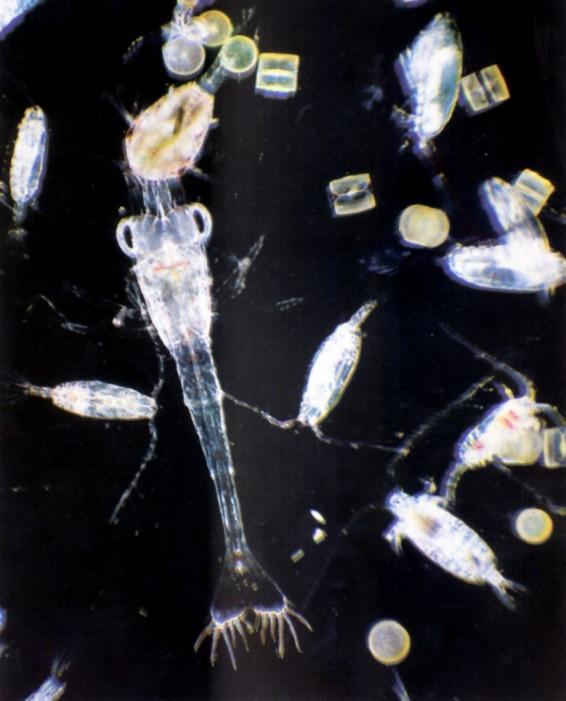
- •Contains:
- •Geography of Continents and Oceans.
- •Introduction.
- •2.The World Ocean.
- •Vocabulary.
- •Africa.
- •7.Population of Africa.
- •7. Population.
- •1.Geographical Position. Discovery.
- •6. Natural Zones.
- •7.Population.
- •3.Relief.
- •5. Inland Waters.
- •6.Population.
- •3.Climate.
- •6. Population.
- •8. Asia.
- •Geographical Position of the Pacific Ocean
- •Geographical Position of the Atlantic Ocean
- •Geographical Position of the Indian Ocean
- •Geographical Position of the Arctic Ocean. Discovery.
- •Introduction.
- •Africa –
- •Australia –
- •Antarctica –
2.The World Ocean.
All the planets of the Solar System but the Earth have no oceans. Water occupies ¾ of the surface of the globe, so the continents look like big islands in the World Ocean. The role of the ocean in the life of people increases. It becomes the source of minerals, water, food, energy.
Oceanic water is very salty. The salts come into the ocean with the river waters mainly. Oceanic water contains salts, gasses and insoluble particles. Saltiness of water depends on rainfalls and evaporation.
In the World Ocean there are four types of water masses:
-
equatorial;
-
tropical;
-
temperate;
-
polar ( arctic and antarctic).
There is an interaction between water masses and atmosphere. They exchange warmth, moisture and gasses.
Movement of the water masses in the World Ocean takes place on the surface and near the bottom. There are some reasons influencing the formation of water masses:
-
the warmth of the Sun;
-
winds;
-
different to;
-
different saltiness.
The direction of the oceanic currents depend on:
-
the direction of the winds;
-
rotation of the Earth;
-
relief of the bottom;
-
coastlines of the continents.
The oceanic currents may be:
-
permanent;
-
periodic;
-
wind currents;
-
flow currents;
-
surface;
-
deep;
-
near the bottom.
There are warm currents and cold currents.
|
Warm currents |
Cold currents |
|
Gulf Stream North Atlantic Curocio Monsoon South Trade North Trade Brazilian North Pacific
|
Californian Peruvian Bengel Canarian Western Winds
|
The World Ocean is very rich. People go fishing. They gather seaweeds for food and corals for jewelry. They also use minerals
L ife
in the World Ocean.
ife
in the World Ocean.
There are many different living organisms in the World Ocean. They live on the surface, deep in water and on the bottom. Most of them live in the surface layer, which is 160 meters deep, because the sunbeams warm and lighten the water there. Many animals live not far from the coastlines of the continents and islands. Plankton lives on the surface and is carried by currents. There are also many active living organisms as fish, dolphins, whales, seals, sharks, turtles and so on. Different corals, worms, mollusks live on the bottom.
T
 he
distribution of living organisms in the surface layer depends on the
climatic zone. There is little plankton in polar waters. In
subarctic and subantarctic climatic belts the amount of plankton is
great. Many fishes and whales come here to feed. In temperate
climatic zone, there is a lot of plankton too. In subtropical and
tropical belts, water is very warm and because of that is rather
salty. Many corals live there. They build coral reefs and islands.
There is no plankton there. Near the equator, there is usually no
plankton as well, but in some places on the border of currents, you
can see big amount of it. That is why many fishes live in equatorial
zone
he
distribution of living organisms in the surface layer depends on the
climatic zone. There is little plankton in polar waters. In
subarctic and subantarctic climatic belts the amount of plankton is
great. Many fishes and whales come here to feed. In temperate
climatic zone, there is a lot of plankton too. In subtropical and
tropical belts, water is very warm and because of that is rather
salty. Many corals live there. They build coral reefs and islands.
There is no plankton there. Near the equator, there is usually no
plankton as well, but in some places on the border of currents, you
can see big amount of it. That is why many fishes live in equatorial
zone
Ecological Problems of the World Ocean.
Pollution.
The World Ocean is under threat, because it is polluted a lot. People get oil and some of it usually goes into water. There have recently been several catastrophes, when a lot of oil spread all over some seas and oceanic coastlines. Plants and factories drop poisonous chemicals, litter and waste into the water and make it impossible to live in. Because of such events many birds and animals die, a lot of plankton disappears. It also brings less oxygen to water and all animals and fishes can die out. Big oceans are poisoned only in some places, but small seas are really in danger.
F ishing.
ishing.
Fishing is another catastrophe. Scientific and technological progress resulted in using by people many devices. Modern ships have special equipment to catch even the whole school of fish. That is why herring and cod are almost caught out. While catching shellfish people damage the bottom. As a result many animals die.
Litter.
A lot of litter swims in the waters of the World Ocean. Five from seven kinds of turtles live in the seas. Turtles eat jelly-fishes, which live in warm currents and near the coasts of the continents. Sometimes they eat plastic bags by mistake and die. Many turtles die in the nets for catching fish. As a result, many turtles are in danger.


